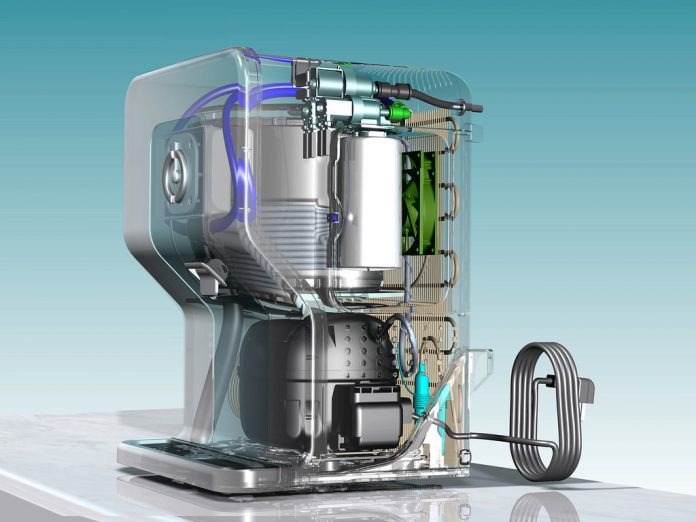Water is the most basic and essential component for human life and survival. Thousands of individuals continue to be harmed by waterborne illnesses. Many deaths and the severe impacts of contaminated drinking water can still be found in many areas. It’s alarming because, in order to be safe, people should make it a habit to drink only clean, filtered water.
Water purifiers are increasingly considered a need in every home. In India, a few rural villages still use chlorine to purify their drinking water. Although it cleans the water, the chemical is hazardous to humans. As a result, make the essential decision to choose the best product for your health.
Several purification technologies are now being used to filter drinking water, including UV, UF, and RO (reverse osmosis). When purchasing a water purifier, don’t forget to think about the following things.
When buying a water filter for your home, the most important factor to consider is the water quality. Water with a high amount of Total Dissolved Solids (TDS) is frequently given to your home. The TDS is made up of all organic and inorganic compounds, whether molecular, ionised, or micro-granular. Drinking water with a pH of 7.4 or higher should have a limit of 50-120 ppm, according to the WHO.
Water pressure is another factor to consider when choosing the proper filter for your water purifier. If the water supply speed is high, a Reverse Osmosis system will perform efficiently. If the water supply system’s speed is less than 5-40 pounds per square inch, companies recommend installing a booster pump.
Contamination refers to the presence of heavy metals such as lead, arsenic, magnesium, copper, and iron in significant concentrations. Industrial waste is one of the most common sources of this dangerous pollution. These inorganic heavy chemicals, as well as other heavy contaminants and bacteria, can be removed with the help of purifiers.
Some of the most effective water purifiers for reducing TDS from drinking water are as follows:
a) HUL Pureit Copper+ Mineral RO+UV+MF Water Purifier (HUL Pureit Copper+ Mineral RO+UV+MF Water Purifier (HUL Pureit Copper+ Mineral RO+UV+MF Water Purifier (HUL Pureit Copper+ Mineral RO+UV+MF Water Purifier (HUL Pureit Copper+ Mineral RO+UV+MF Water Purifier (HUL Pureit Copper+ Mineral RO+UV
Copper+ Mineral RO, a new water purifier from HUL Pureit, is now available. To improve the benefits of clean, filtered water, copper is added.
Pureit Copper+ RO is a Pureit water purifier with seven stages of RO, UV, and MF. Copper Charge TechnologyTM in this RO purifier adds copper to the purified water.
Drinking water from a copper vessel is an Ayurvedic philosophy-based Indian ritual that dates back millennia. Copper is a mineral that helps with digestion, weight loss, immunity, and general health.
Using a Copper jug to manually add copper to drinking water entails leaving the water in the jug overnight for 8-10 hours. Copper pots are very difficult to keep clean because oxidation must be avoided by cleaning them with lemon juice or baking soda.
Features of the HUL Copper+RO Purifier:
Pre-Sediment Filter, Pre-RO Carbon Filter, Mesh Filter, Reverse Osmosis Membrane, UV Reactor, Post-RO Carbon Filter, and Micro Filter Membrane .
Borehole, tanker, or municipal tap water are all acceptable.
A storage tank with a capacity of 8 litres
Up to 28 litres per hour purification capacity
Purifies water at a rate of up to 28 litres per hour with a TDS of up to 2000 mg/l (ppm) and a TDS of up to 2000 mg/l (ppm) (ppm).
Storage tank empty/full, filter change, and machine error are all indicated via LEDs.
Soft-touch buttons for distributing copper-charged RO water and RO water that hasn’t been copper-charged.
HUL Pureit Eco Water Saver Mineral RO+UV+MF Water Purifier (HUL Pureit Eco Water Saver Mineral RO+UV+MF Water Purifier) b) HUL Pureit Eco Water Saver Mineral RO+UV+MF Water Purifier (HUL Pureit Eco Water Saver Mineral RO+UV+MF Water Purifier)
HUL Pureit’s all-new ‘Eco Water Saver Mineral’ is now available. As the name implies, this water purifier provides you with clean and delicious RO-filtered water while conserving as much water as possible.
This RO water purifier has a few characteristics that other RO water purifiers don’t have. It is India’s first RO purifier, capable of recovering up to 60% of water and reducing waste. Ordinary RO purifiers only recover 25-30% of the filtered water. When compared to regular ROs, the HUL Pureit Eco Water Saver reduces water waste by over 100%.
Features of the HUL Eco Water Saver Mineral RO+UV+MF Water Purifier:
The seven purification steps are the Pre-Sediment Filter, Pre-RO Carbon Filter, Mesh Filter, Reverse Osmosis Membrane, UV Chamber, Post-RO Carbon Filter, and Micro Filter Membrane.
Borehole, tanker, or municipal tap water are all acceptable.
A large storage tank with a capacity of ten litres
Up to 24 litres per hour purification capacity
Water loss is decreased due to the high water recovery rate of roughly 60%.
Filter change, storage tank empty/full, and machine error Indicators with LEDs Water with a high TDS level of up to 2000 mg/l is purified (ppm). Filter change, storage tank empty/full, and machine error Indicators with LEDs
If the filters are not changed in a timely manner, the purification is turned off automatically.
Should You Purchase a Water Purifier?
The phrases “water filters” and “RO water purifiers” are now interchangeable. As a result, most people assume that when it comes to selecting a purifier, RO is the first thing that comes to mind, ignoring some of the most important considerations such as the water source or TDS level.
If you’ve read this far, you’re probably aware that RO purification is only required when the TDS level in the water entering your home or business is high.
Water purifiers range from simple tap water filters to gravity-based purifiers such as UV, UF, RO, and their mixes.
Because there are so many various technologies and models from hundreds of different brands, choosing the right water purifier for your home or office has become more difficult.
As previously stated, a RO purifier should only be purchased if the water to be purified has a high TDS level. The maximum TDS level for safe drinking water has been set at 500 ppm by the Bureau of Indian Standards (BIS).
If the TDS level is less than 500 ppm, there is no need to use a RO purifier. Because if your water source has a low TDS level to begin with, the RO purifier will further reduce it to a very low TDS level. As a result, key elements like calcium and magnesium would be absent from the filtered water, which are essential for human health. Look for turbidity (clarity), muddiness, or biological pollutants such as bacteria and viruses if the TDS level in the entering water is less than 500 ppm.
Despite claims that they use cutting-edge technology to set themselves apart from the competition, the great majority of water purifiers use a combination of three basic purification methods: reverse osmosis (RO), ultraviolet (UV), and ultrafiltration (UF) (ultrafiltration).
Apart from it if you are interested, you can also read Diversity in the world of Bacteria and Chuck Norris dead.




![How Much is Lil Baby’s Net Worth in 2024 [Latest Info] Lil Baby Net Worth](https://www.wariat.org/wp-content/uploads/2024/03/Lil-Baby-Net-Worth-150x150.jpg)
![Rob Lowe Net Worth Speculation in 2024 [Comparative Analysis] Rob Lowe Net Worth](https://www.wariat.org/wp-content/uploads/2024/03/Rob-Lowe-Net-Worth-150x150.jpg)

